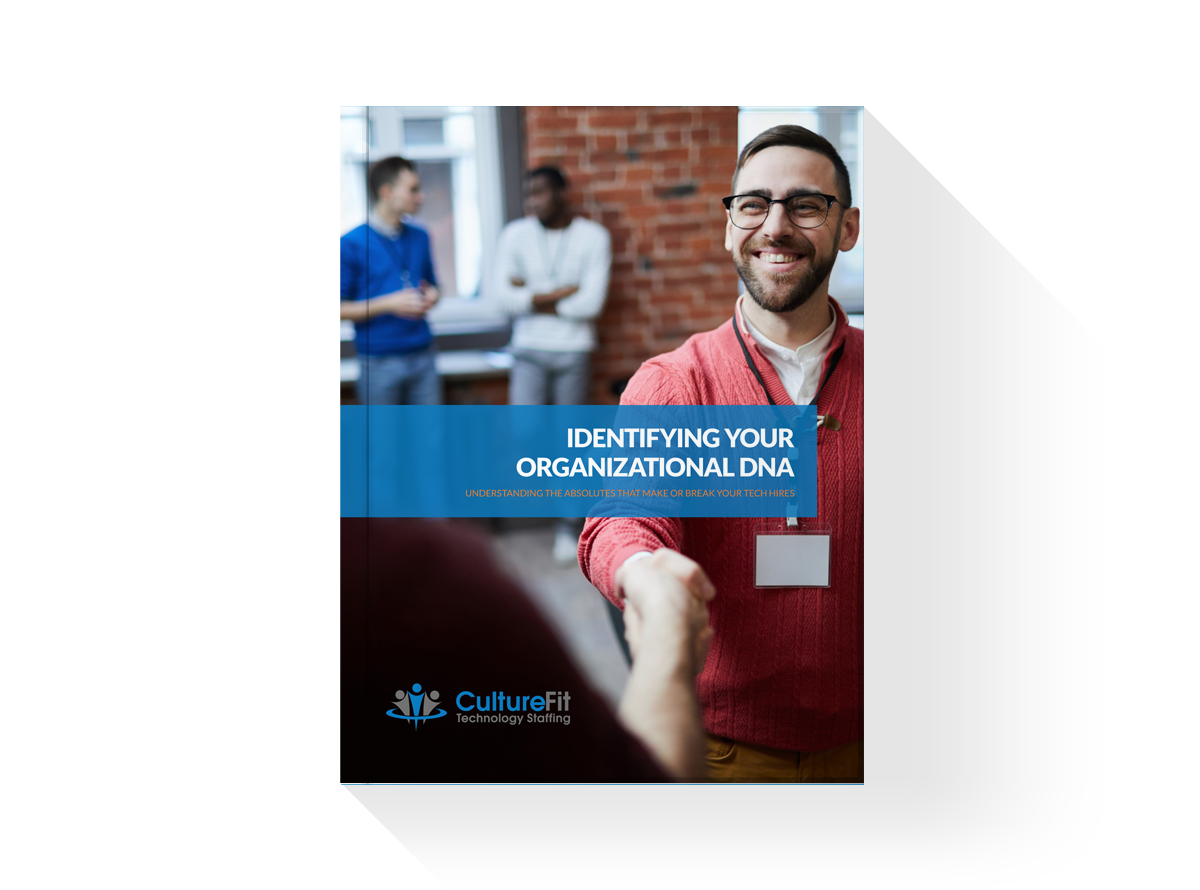2018 Tech Buzzwords – Do They Translate to Tech Jobs?
The tech industry is notorious for taking a new innovative trend and converting it into some cool “buzz word” to give it that special kind of tech love. Once the “buzz word(s)” are adopted by mainstream subject matter experts, newly formed job positions are typically the true indicators as to whether the marketplace is ready to convert a trend to a core competency.
This prompted a valid question – are the 2018 trends converting to new tech jobs, or are they just an interesting topic for journalists, experts, and bloggers? We reviewed our own placement rosters, and ran a thorough scan of the market to provide some perspective of how these new trends translate into actual jobs*. The results we came up might be a good indicator respective to the short-term and long-term “staying power”.
1. Artificial Intelligence
According to Techopedia, Artificial intelligence is a branch of computer science that problems of artificial intelligence include programming computers for certain traits such as:
- Knowledge
- Reasoning
- Problem solving
- Perception
- Learning
- Planning
- Ability to manipulate and move objects
Machine learning is a core part of AI. Learning without any kind of supervision requires an ability to identify patterns in streams of inputs, whereas learning with adequate supervision involves classification and numerical regressions.
Open Jobs: 218 Chicagoland; 4231 in U.S.
2. Biometric Solutions
According to Biometric Solutions (yes, there’s a digital resource dedicated to “biometric” technologies) biometrics refers to technologies that measure and analyze human physiological or behavioral characteristics for authentication or identification purposes. Some of the most widely used characteristics or biometric factors are fingerprints, irises, voice patterns and the spatial geometry of the face.
Open Jobs – 99 Chicagoland; 2917 U.S.
3. Multicloud(or Multi-Cloud, Multi Cloud)
According to Rackspace, “Multi-cloud” describes an environment that relies on multiple clouds — such as OpenStack®, Microsoft® Azure® or AWS. For instance, you may be running a workload that requires large pools of storage and networking resources on a private cloud, such as OpenStack.
Open Jobs – 0 in Chicagoland; 1 in U.S.
This may be a new buzzword, but when we changed our keyword search to “Cloud Computing Platforms” the results were significantly different: Chicagoland – 343; U.S. – 7847
4. The Intelligent Digital Mesh
Gartner seems to have coined their own term – as the entwining of people, devices, content and services the intelligent digital mesh. It’s enabled by digital models, business platforms and a rich, intelligent set of services to support digital business. Gartner, provides an additional breakdown as:
Intelligent: How AI is seeping into virtually every technology and with a defined, well-scoped focus can allow more dynamic, flexible and potentially autonomous systems.
Digital: Blending the virtual and real worlds to create an immersive digitally enhanced and connected environment.
Mesh: The connections between an expanding set of people, business, devices, content and services to deliver digital outcomes.
Open Jobs – 0 in Chicagoland; 0 U.S.
Gartner may see this as a new 2018 trend, which certainly has a strategic basis respective to a technological evolution, but try looking for a job in this strategic category and there are no results. However, by changing the keyword search term to “Integrated Computing” we were able to identify a broader interest – Chicagoland – 174; U.S. – 3576
5. Blockchain
Per Computerworld, blockchain represents a new paradigm for the way information is shared – tech vendors and companies are rushing to figure out how they can use the distributed ledger technology to save time and admin costs. Numerous companies this year have been rolling out pilot programs and real-world projects across a variety of industries – everything from financial services to healthcare to mobile payments.
Open Jobs – 21 in greater Chicagoland; 804 for the U.S.
6. Microservice Architecture
According to SmartBear, while there is no standard, formal definition of microservices, there are certain characteristics that help identify the style. Essentially, microservice architecture is a method of developing software applications as a suite of independently deployable, small, modular services in which each service runs a unique process and communicates through a well-defined, lightweight mechanism to serve a business goal. How the services communicate with each other depends on the application’s requirements, but many developers use HTTP/REST with JSON or Protobuf.
Open Jobs –157 Chicagoland; U.S. 3217
7. Internet of Things (IoT)
Per the Business Insider – The IoT refers to the connection of devices (other than typical fare such as computers and smartphones) to the Internet. Cars, kitchen appliances, and even heart monitors can all be connected through the IoT. And as the Internet of Things grows in the next few years, more devices will join that list.
Open Jobs – 157 Chicagoland; U.S. 3216
8. Quantum Computing
Per Microsoft – in quantum computing, a qubit (short for “quantum bit”) is a unit of quantum information—the quantum analogue to a classical bit. Qubits have special properties that help them solve complex problems much faster than classical bits. One of these properties is superposition, which states that instead of holding one binary value (“0” or “1”) like a classical bit, a qubit can hold a combination of “0” and “1” simultaneously. When multiple qubits interact coherently, they can explore multiple options and process information in a fraction of the time it would take classical even the fastest non-quantum systems.
Open Jobs – 5 Chicagoland; U.S. 198
9. Serverless Architecture
AWS defines this as a programmable approach which allows you to build and run applications and services without having to manage infrastructure. Your application still runs on servers, but all the server management is done by AWS. You no longer have to provision, scale, and maintain servers to run your applications, databases, and storage systems.
Open Jobs – 21 Chicagoland; 331 U.S.
10. Dark Data
Per Gartner – Gartner defines dark data as the information assets organizations collect, process and store during regular business activities, but generally fail to use for other purposes (for example, analytics, business relationships and direct monetizing). Similar to dark matter in physics, dark data often comprises most organizations’ universe of information assets. Thus, organizations often retain dark data for compliance purposes only. Storing and securing data typically incurs more expense (and sometimes greater risk) than value.
Open Jobs – 17 Chicagoland; 436 U.S.
Jobs are one of the most reliable adoption indicators. Trends and “Buzz Words” are commonly code words for early stage development. As with any other industry, some trends will stick, others will simply fade into the past. CultureFit Technology Staffing is in the unique position of being able to determine the difference based on new job requisitions. Need more reliable support with your technology staffing? Let’s connect.
*Jobs resource: Indeed.com


